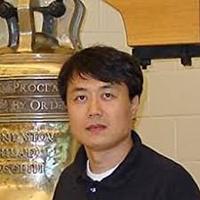报告题目:Quality Control with Unequal Sample Sizes

报告所属学科:管理科学与工程
报告人:Park Chanseok(釜山国立大学)
报告时间:2020年12月3日 10:30
报告地点:腾讯会议ID:368739048
报告摘要:
Motivated by the construction of Shewhart-type control charts with unequal sample sizes, we provide several estimators which are needed to estimate process parameters. When samples are unbalanced, special cares should be taken to ensure the unbiasedness of estimators. We consider incorporating the proposed method into the control charts. The usual requirement under the control charts is that the sample sizes of subgroups are all equal (balanced) under the normality. In practice, however, it is often the case that the samples are not balanced. There exist several ad-hoc methods to handle the case of unbalanced samples. However, these ad-hoc methods are biased, which can result in underperformance.
In this talk, we suggest several unbiased estimators and provide the rigorous proofs of the inequalities needed for selecting an estimator. The proofs reveal an interesting and useful connection between the statistical and mathematical theories. For example, the normal-consistency factor c4 can be expressed using the Wallis' production formula calculating pi and the Watson representation.
报告人简介:
Park Chanseok is at present a tenured full professor of Industrial Engineering at Pusan National University, Busan, Republic of Korea (South Korea). He received his M.A. in Mathematics under the supervision of Professor Ayanendranath Basu from the University of Texas at Austin, and his Doctorate in Statistics under the supervision of late Professor Bruce G. Lindsay from the Pennsylvania State University. Before joining Pusan National University, he was a faculty member of Mathematical Sciences at Clemson University, Clemson SC, USA from 2001 to 2015. He was on the editorial board of Journal of Probability and Statistics and International Journal of Quality Engineering and Technology. His research interests include engineering statistics, robust inference, reliability, competing risks model, statistical computing and simulation, acoustics, and solid mechanics.




